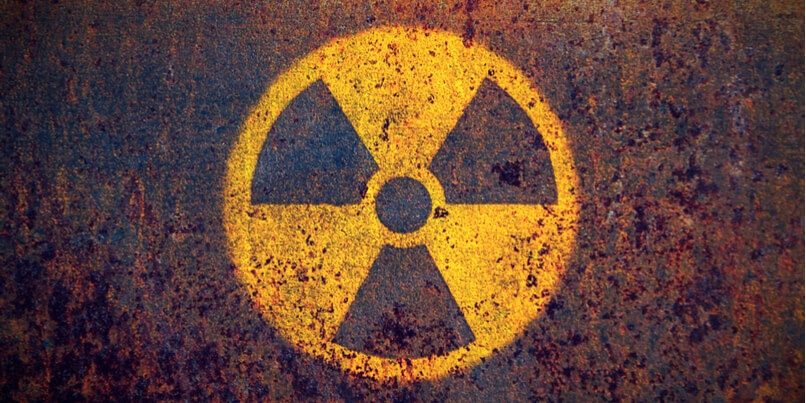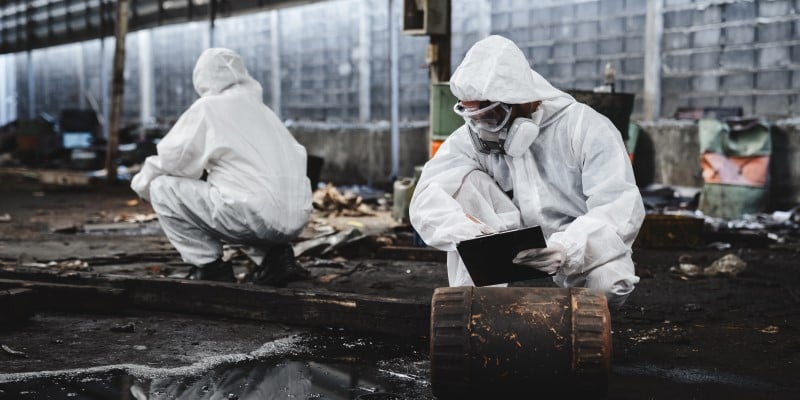 A key objective for HazMat and CBRNe instructors is to be able to devise realistic radiation safety training opportunities that replicate the challenges and conditions of live incidents.
A key objective for HazMat and CBRNe instructors is to be able to devise realistic radiation safety training opportunities that replicate the challenges and conditions of live incidents.
There are a variety of key skills that you may well want to be able to observe and assess in your radiation safety training exercises, including:
- Their understanding of critical search, reconnaissance, survey and location skills
- Their comprehension of inverse square law
- Their knowledge of isodoserate mapping, shielding and safe demarcation
- Their understanding of contamination, cross-contamination and decontamination
Hands-on training exercises can offer an invaluable opportunity to test your students' ability to read, interpret and accurately convey the information from their survey meters.
And wherever possible, these training exercises should enable you to mimic the complex physical and psychological challenges that your trainees are likely to face in real-life radiation events.
Training for live radiation incidentsWithin the context of radiation safety, the Mirion RADOS RDS-200 Universal Survey Meter is an essential tool that is widely used by personnel across a diverse range of contexts, from military and civil defence to industrial and laboratory use.
A big selling point of the RDS-200 is that its interface has been designed around an easy-to-use menu structure. The question remains however - how you can create training scenarios that best replicate how that device will function in a real-life incident as it responds to an ionizing radiation source?
While training with actual radiological sources undoubtedly offers a high degree of realism, there is also a significant cost, administrative effort and health and safety consideration which can make these methods impractical except for in highly specialized situations.
Even very short term exposure to controlled quantities of radiation carries with it an element of risk. So if you can devise a scenario that removes the need for an ionizing radiation source, you instantly resolve a raft of regulatory, environmental and safety issues.
But what options exist for creating realistic, hands-on training scenarios that can accurately reflect the conditions of live radiation incidents for your students?
One solution is to use an intelligent, electronic simulator detector that can replicate all the functionality of a real detector.
The key point of difference with this training approach is that electronic simulator detectors have been designed to respond to a safe electronic source. So they can be used in any setting (including public buildings) and with zero risk to personnel, the environment or infrastructure.
For training in the use of the Mirion RADOS RDS-200 portable survey meter for example, there is the option to replace the actual device with a simulator version such as the RDS-200-SIM.
The RDS-200-SIM
The RDS-200-SIM works by receiving an encoded signal from a deployed electronic simulation source (or sources) which represents specific gamma emitting radionuclides.
The simulator is compatible with the GMP-11-SIM probe, which responds to fluorescent powder and liquid materials that simulate beta sources for training in contamination, cross-contamination and decontamination. It can also be used in conjunction with the PlumeSIM wide area exercise system for tactical field and nuclear emergency response exercises.
If it's required, multi-detector and multi-isotrope training can take place within the same scenario. And there is also the option to include hazardous substance releases (including chemical warfare agents) to drive HazMat / CW simulation detectors.
Safety, efficiency and enhanced learning outcomes
Electronic simulator detectors such as the RDS-200-SIM offer a realistic, hands-on training experience which enables radiological incident instructors to safely teach (and evaluate) every aspect of a trainee's response to a simulated radiation incident.
And crucially too, the use of simulator detectors enables you to quickly and easily set-up and break-down your exercises.
For HazMat and CBRNe instructors, there are many tangible benefits - with less time wasted on logistics and administration, and more opportunity to focus on delivering the best possible learning experience for your trainees.







